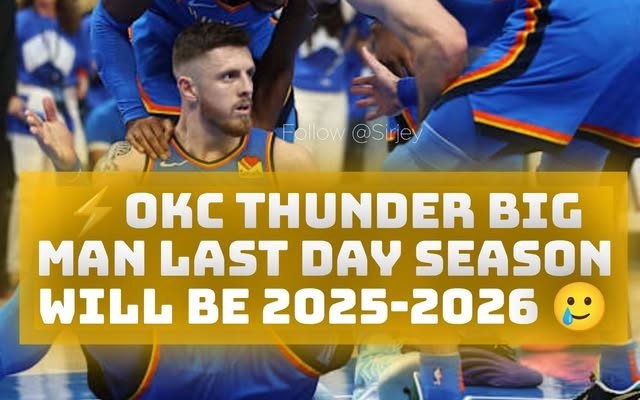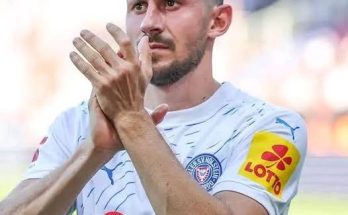Alex Caruso has built his NBA reputation on grit, hustle, and defensive excellence. But over the summer, his leadership and communication skills have quietly taken center stage in his new role with the Oklahoma City Thunder. Known primarily for his ability to change the game without filling up a box score, Caruso’s transition into the Thunder culture has revealed a new layer of value—his ability to act as a cultural conduit between players and the coaching staff, particularly head coach Mark Daigneault.
When the Thunder acquired Alex Caruso via a surprise trade with the Chicago Bulls in early July, the move was immediately praised for basketball reasons. The Thunder, one of the youngest and most promising rosters in the league, lacked a veteran defensive specialist with championship pedigree. Caruso, who won a title with the Lakers in 2020 and had consistently been among the league leaders in deflections, steals, and hustle stats, checked all those boxes. What was less obvious, however, was how critical he would become off the court—especially in a leadership role that few had anticipated.
Shortly after his arrival in Oklahoma City, Caruso made a deliberate effort to understand the tone and tenor of the Thunder locker room. In an interview with reporters during the Thunder’s Summer League activities in Las Vegas, Caruso opened up about how he approached his new team, saying that his first job wasn’t to dominate in drills or bark out orders. Instead, it was to observe, listen, and feel out the relational dynamics between players and coaches. What he discovered was a locker room teeming with potential, filled with young players who respected Daigneault but also needed someone closer to their peer level to translate his vision into locker room reality.
Caruso explained that his time with the Lakers—especially under Frank Vogel and alongside LeBron James—had taught him how critical it was to maintain a healthy buffer between the coaching staff and the players. Coaches bring structure and accountability, but they often communicate in ways that don’t always land effectively with younger talent. Caruso realized that with the Thunder’s core of Shai Gilgeous-Alexander, Jalen Williams, Chet Holmgren, and Josh Giddey, there was a huge opportunity to play the role of “translator”—not linguistically, but culturally and emotionally.
By his own account, Caruso took the role seriously. He quickly forged tight relationships with the team’s young core, often pulling them aside after practices to discuss points of emphasis that came up during team huddles. He would reframe Daigneault’s directives in a tone and style that resonated more naturally with younger players. If Daigneault had concerns about defensive rotations or tempo in transition, Caruso made sure those messages were echoed in team film sessions, hallway conversations, and even casual group chats.
In his interview, Caruso recounted one instance during a team practice when Coach Daigneault was frustrated with the team’s lack of energy on the defensive end. Rather than letting the frustration simmer or escalate, Caruso approached Daigneault directly and offered to address the team himself. He didn’t sugarcoat the message, but he delivered it in a way that reflected shared accountability. Instead of “Coach is mad,” the message became “We’re better than this.” That subtle shift helped galvanize the group.
But Caruso’s value wasn’t just about relaying messages—it was about buying time and space for both sides to operate more freely. When Daigneault needed to challenge a player without bruising egos, Caruso would step in beforehand to prep the player emotionally. Similarly, when players were frustrated by unclear roles or felt tension brewing, Caruso was often the first to hear about it. His credibility as a tenacious defender and proven winner gave him a unique platform. When Caruso spoke, the room listened—not because he was loud, but because he had earned the right to be heard.
The Thunder coaching staff began to lean into Caruso’s intermediary role, giving him more autonomy in player-led film sessions and huddles. While Daigneault remained the team’s strategic architect, Caruso operated like a field general—an extension of the coach’s voice with the trust of the locker room. It wasn’t always about X’s and O’s either. Sometimes it was about tone. Sometimes it was about timing. And sometimes, it was about simply asking the right question in the right moment to get a teammate to reflect on their effort, attitude, or responsibility.
Interestingly, Caruso’s ability to act as a buffer didn’t undermine Daigneault’s authority—it reinforced it. Players began to take coaching feedback more seriously because they understood it through Caruso’s lens of shared experience. This allowed Daigneault to coach harder, push more aggressively, and expect more out of his roster without walking the fine line between inspiration and alienation. The mutual trust between Caruso and Daigneault created a feedback loop that enhanced communication on both sides of the equation.
Caruso has also been instrumental in helping Chet Holmgren mature defensively. Holmgren, who missed the entirety of the 2022–2023 season due to injury, entered last year as a redshirt rookie with enormous expectations. While his talent was undeniable, there were growing pains—particularly in learning the intricacies of NBA defensive schemes. Caruso, sensing that Holmgren was sometimes hesitant to ask for clarity in film sessions, began mentoring him off the court. He would invite Holmgren to sit next to him during film reviews, explaining positional nuances and helping him understand how to anticipate reads rather than react to them. Caruso didn’t make it a big deal—he just made himself available, and Holmgren responded.
Another underrated benefit of Caruso’s presence has been the example he sets through work ethic. Multiple Thunder players have commented on how Caruso is often the first one in the gym and the last to leave. He’s constantly rehabbing, stretching, or reviewing tape. And while many players talk about “putting in the work,” Caruso lives it out in real time. His preparation has become contagious, inspiring younger players to approach their own routines with more seriousness. For a team as young as Oklahoma City, those kinds of role models matter deeply.
The impact is already beginning to show in team cohesion. During the Thunder’s early offseason workouts and scrimmages, the tone of communication has improved. There’s more chatter on defense, more ownership on mistakes, and more self-policing within the player group. While Daigneault continues to evolve as one of the NBA’s best young coaches, he now has a partner on the floor who can keep the temperature of the locker room stable and productive.
Looking forward, Caruso’s role will only grow more pivotal. The Thunder are on the cusp of serious playoff contention in the Western Conference. They boast a blend of elite young talent and tactical discipline that few teams can match. But as the stakes rise, so do the risks of fragmentation, frustration, and internal pressure. This is where Caruso’s calming presence and behind-the-scenes guidance may prove even more valuable than his steals or deflections. Teams rise and fall not just on talent but on trust, and Caruso has become a trust bridge.
What’s remarkable is how naturally Caruso has stepped into this role without fanfare. There’s no public posturing, no self-aggrandizing. He speaks about his responsibilities with humility, crediting his coaches and teammates for giving him the space to lead. But those around the team know the truth—Caruso is a cornerstone of the Thunder’s chemistry experiment, one that could determine how far this young core can go in a crowded Western Conference landscape.
In many ways, Alex Caruso’s story with the Thunder is a case study in how leadership in the NBA is evolving. It’s no longer just about the loudest voice or the most points per game. It’s about emotional intelligence, relational capital, and the ability to unite diverse personalities under a common vision. Caruso has become that kind of leader, bridging generational gaps and helping orchestrate harmony within one of the league’s most intriguing young rosters.
Ultimately, the measure of his influence may not show up on stat sheets or highlight reels. It will be found in the way the Thunder respond to adversity, how they rally in close games, and how their young stars develop into complete professionals. And when those stories are told, they will include moments where Alex Caruso stepped in—not just to make a steal or take a charge, but to mediate, guide, and elevate. In doing so, he’s not just playing defense—he’s defending a culture that could carry the Thunder all the way to the top.



